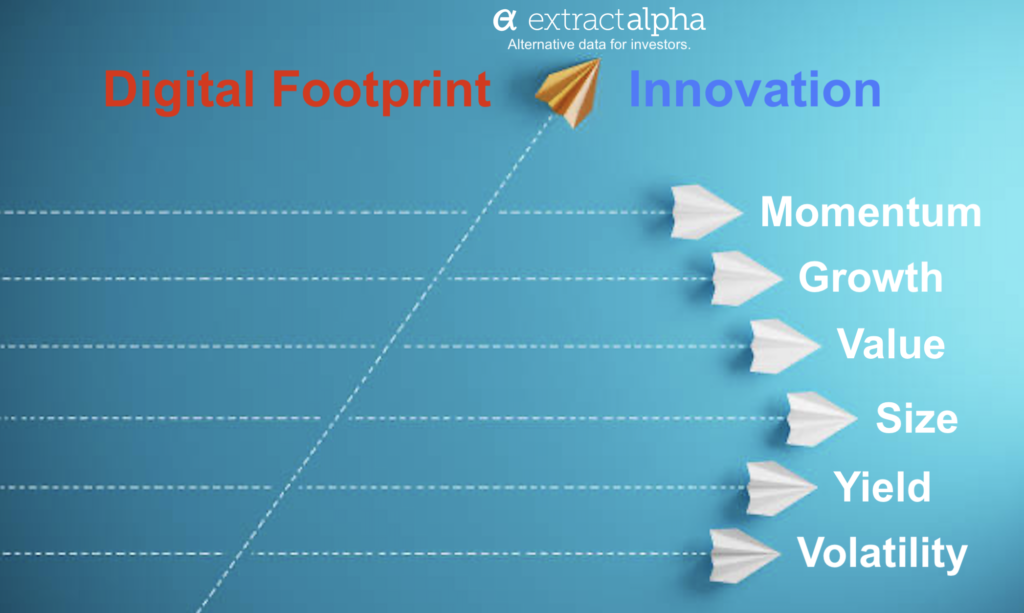
On Nov 9, Pfizer reported that its COVID-19 vaccine had proven to be 90% effective in early testing. That day, beaten-down Value stocks like Carnival Cruise Lines (CCL) shot up and high-flying Momentum stocks like Zoom (ZM) got beaten down. Market participants seemed to think that the year’s divergence between these two groups was now overstated and that a return to normal was due.
The Value-Momentum rotation on the 9th was swift and violent. Below we plot the cumulative year to date returns for long/short portfolios (equally weighted within top/bottom deciles) formed using the Value and Momentum factors from our ExtractAlpha Risk Model to show the general anti-correlation of Value and Momentum this year along with the November 9 rotation – noting that there was a similar rotation back in early June.
There’s been another less well-known trend this year: the most innovative companies – those which are R&D intensive and with growing digital footprints – have outperformed significantly. We can quantify the innovation of these companies with two alternative datasets:
1. By using data on patents and work visas from ExtractAlpha’s ESGEvents Library
- ESGEvents Library is a cleaned, tickerized dataset of U.S. government filings, including company patent applications and grants from the USPTO as well as H1B and Permanent visa applications from the Department of Labor.
- We create an Innovation factor for thousands of U.S. stocks based on company- and industry-level engagement in IP activities and knowledge worker hiring.
2. By tracking growth in the company’s digital footprint, as captured in the Digital Revenue Signal (DRS)
- DRS scores thousands of companies globally each day on their online engagement across social media, web search, web traffic, and other metrics.
- DRS is predictive of both revenue surprises and earnings period returns.
Below, we create long-short, dollar neutral portfolios based on each of these factors, equally weighted and rebalancing daily (they are fairly low turnover, especially the Innovation factor, and for this purpose we ignore transaction costs). We restrict the universe here to liquid U.S. stocks. The 2020 year-to-date performance of these portfolios have been incredibly strong: approximately 25% for DRS and over 50% for Innovation.
Initially, we might think that the most innovative companies were the ones which experienced Momentum this year. But neither of the above innovation signals look like the Momentum lines we showed before, and interestingly, we didn’t see any corresponding crash in the innovation signals on Nov 9. This implies that we can separate Innovation from Momentum. This year, the companies which were most rewarded could be identified using these innovation-related metrics, and they were not punished when the market rotated away from Momentum.
We can see from the following (admittedly anecdotal) examples of innovative companies that their returns on Nov 9 were driven by their Momentum exposure, and not how innovative they are:
- high-momentum innovative companies such as chip makers and online retailers erased their earlier gains
- low-momentum innovative companies which had been hit more by COVID-19 recovered
We view innovation and digital demand as new, alternative data-driven alphas or perhaps “alternative risk premia” in the coming years. These signals have some correlation to Momentum and Growth (and the inverse of Value), but clearly they capture something else, an underlying, diversifying factor and something which will be increasingly important in the years to come as technology continues to advance.